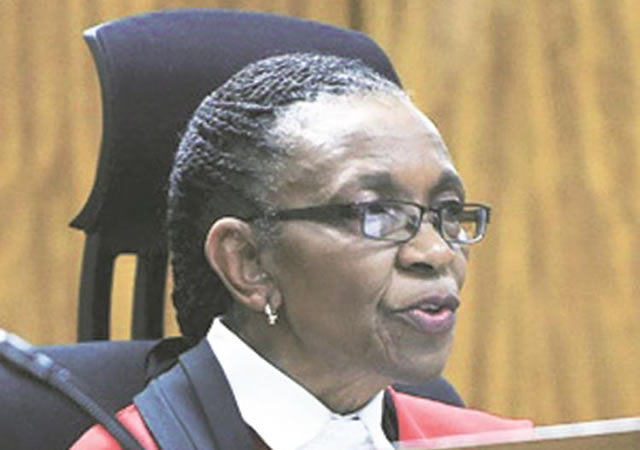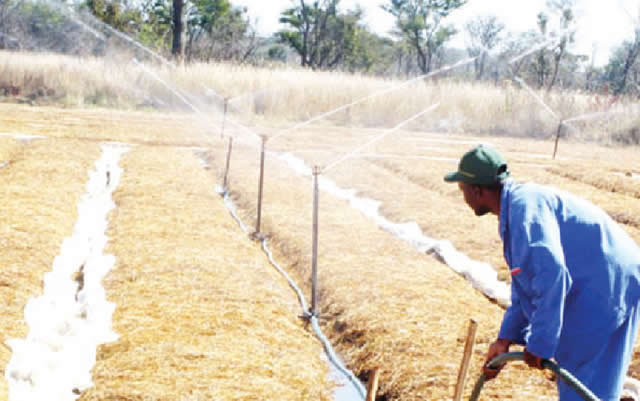Zim climate change mitigation to cost $10bn

Jeffrey Gogo Climate Story
ZIMBABWE will require $10 billion to meet the costs of climate change adaptation and mitigation in the next five to ten years, but Treasury has told those that did the costing “you are crazy.”The detailed cost structure is contained in the National Climate Change Response Strategy (NCCRS), which was only finalised and approved in July after two years of consultations. The Herald Business could not immediately obtain those sectoral budgets.
However, the Institute of Environmental Studies’ (IES) Professor Sarah Feresu, who led the strategy development making process, said
“we actually had people from finance saying ‘you are crazy. There is no way Government can fund this.’”
She was speaking at the first stakeholders meeting on the making of a National Climate Policy in Harare last week.
Among other things, the climate policy is expected to create good ground for mobilising domestic and international capital to fund mitigation and adaptation.
I hoped Professor Feresu was joking. How does a Government, which has clearly demonstrated its committment to fighting climate change by cratfting strategies and policies that help people cope, turn back again and say “you are crazy” to funding its own strategies?
She wasn’t. “We are actually hoping that the development partners will help in loans . . . to contribute to that budget,” Professor Feresu appealed at the workshop attended by many including representatives from UN agencies, such as the UN Development Programme (UNDP).
Like many developing countries, Zimbabwe is hoping to access finance under international mechanisms such as the Green Climate Fund to bankroll domestic mitigation and adaptation.
Such funding is from promises made by industrialised states – the countries most responsible for causing climate change – under the UN’s Framework Convention on Climate Change, as part of their obligations to help poor nations adapt.
However, those promises remain unfulfilled, to Africa’s chagrin. Promises of $30 billion in fast start finance between 2010-2012 were only half-met. The pledges of US$100 billion per year since last year until 2020 remain only that, pledges.
Very little money has gone in the way of Africa to fund mitigation and adaptation.
A Shona proverb says zano pangwa une rako, loosely translated to mean advice from other people should be taken with a pinch of salt.
That’s not a problem for Zimbabwe. Ine rayo zano kare. The climate change response strategy is already place, but one which the guys from Treasury talking to Professor Feresu were not prepared to fund.
The issue of the National Budget’s incapacity to finance adaptative and mitigatory action is not in question.
The entire economy is currently in a fix.
It is only last Thursday that Finance Minister Patrick Chinamasa tightened his squeeze on consumers by introduced new or hiked taxes, even on mobile phone airtime, as part of measures to boost Government revenues.
However, what would be “crazy” is for Government to continue streamlining climate change funding when it is looking to implement strategies and policies that supposedly mainstream the science into national developmental and budgetary processes.
The costs of inaction or weak climate budgeting will be far greater when the real impacts of climate change strike.
Adequate preparation must and needs be taken now.
Both the climate change response strategy and climate policy are strong foundations for building long lasting resilience, which can only deliver the desired outcomes when funded fully.
The US$10 billion is only a provisional budget. Professor Feresu said the money will need to be reviewed after 5 five years.
It is unlikely the budget will be reviewed lower.
In Zimbabwe, adaptation is particularly key in agriculture, which supports two thirds of the population.
By mid this century, agriculture yields are expected to have declined by 30 percent here, as well as in most of southern Africa.
Millions of families could go hungry if this is allowed to happen without capacitating communities to adapt or mitigate the expected changes.
Other major areas of concern include the sectors of water, energy, industry, forestry, transport and tourism.
MIX-UP? WHAT MIX-UP?
It is of little substance now, the procedural mix-up that first created a climate change response strategy ahead of a guiding climate policy.
This kind of confusion is inherent in the Environment Ministry, but still gets the job done.
In 2003, the ministry asked the Institute of Environmental Studies to develop the National Environment Policy “to act as an umbrella and align” with the Environment Management Act, which had been passed a year earlier.
The environment policy only came to life six years later in 2009.
Now, Professor Feresu wants attention to centre on the formulation of the National Climate Policy and forget past errors.
She told the climate policy stakeholders meeting that “the logical step would have been to start with a policy” before moving to a strategy, but there was little harm repeating an old trick. “What we did (with the environment policy) was to “make the policy talk to the Act,” said Professor Feresu.
However, thanks to the response strategy, mischievously preceding the policy as it did, that strategy has established “Zimbabwe should enact an enabling policy environment for climate change response . . . and develop a climate change policy.”
Two weeks ago, Environment, Water and Climate minister Saviour Kasukuwere told The Herald Business that he was unimpressed his predecessors had broken the expected Government procedure during strategy and policy making processes.
But stakeholders at the National Climate Policy workshop felt the procedural failures were now water under the bridge.
Noone else captured this general sentiment more vividly than Daisy Mukurakati of the UNDP, a key partner and funder of both Zimbabwe’s climate change strategy and climate policy.
She said: “Some may say the climate change policy process we have handled it in a reverse manner (sic), that is starting with the strategy instead of a policy.
“I would like to say there are positives in the way that we have carried it out. The bigger job has been done. And the policy process should then ride on the strategy process that has already been undertaken.”
With the strategy in place, the work on a National Climate Policy appears to have been completed before it’s even started.
There seemed to be general consensus at the inception workshop that the Policy objectives, vision etc should align or be similar to those from the Strategy.
The definitions or key elements of what constitutes a strategy or policy where inconclusive. They both aimed at the same object.
Professor Feresu said “it’s the same thing, really. A policy is a plan of action . . . it can be a strategy . . . I want to be provocative; should we start where we are starting or we should start by using the elements we already have, which we can upscale to policy level.?
“The Policy should summarise the Strategy, but there are fundamentals that have to remain the same. If you were to ask me, the visions, goals and objectives of the Strategy should be the same with those of the Policy.”
The September 8 meeting was the first in a series of meetings lined up countrywide before June next year, when the climate policy is expected to have been completed.
God is faithful.










Comments